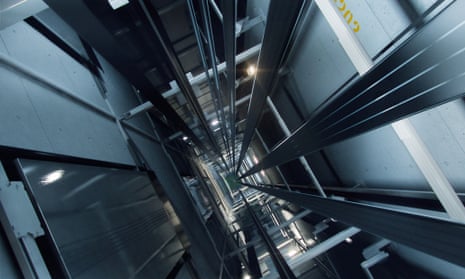Looking Into the Globe of Elevators: Usual Problems Faced by Numerous Lift Devices
As we browse through the vertical transportation systems of modern-day buildings, lifts stand out as a vital component of our everyday lives. From hydraulic lifts to grip systems and machine-room-less designs, each lift kind comes with its collection of usual issues.
Hydraulic Lifts
Hydraulic lifts, frequently liked for low-rise structures, utilize fluid stress to manage the activity of the lift vehicle (lift repair companies). This device entails a hydraulic pump pushing oil into a cyndrical tube, triggering the lift to relocate in the desired direction. While hydraulic elevators are recognized for their smooth and silent operation, they do feature their own set of typical concerns
One prevalent problem with hydraulic lifts is oil leak. Furthermore, problems with the control system, such as malfunctioning shutoffs or a malfunctioning pump, can create interruptions in the lift's activity.
Normal upkeep and punctual repair services are vital to guarantee the smooth functioning of hydraulic elevators. By attending to these typical problems proactively, building proprietors can decrease downtime and make certain the safety and security and effectiveness of their upright transport system.
Grip Elevators
When considering upright transport systems in buildings, another usual type in addition to hydraulic lifts is the traction elevator. Grip elevators operate making use of a system of ropes and weights that relocate the elevator vehicle by clutching onto the hoist ropes. This device permits smoother and faster upright transportation compared to hydraulic systems.
One of the usual problems faced by grip elevators is rope wear. The consistent motion of the ropes within the traction system can lead to deterioration in time, potentially triggering the elevator to breakdown or become harmful for usage. Regular inspections and upkeep of the ropes are necessary to make sure the elevator's correct functioning and safety.
One more issue that traction lifts may run into is associated to the control system. Issues with the control system can lead to problems such as irregular movement, hold-ups in response times, or perhaps full shutdowns. Regular screening and upkeep of the control system are essential to avoid such issues and make sure the elevator's dependability.
Machine-Room-Less (MRL) Lifts

Among the crucial elements of MRL elevators is the portable gearless traction machine that is mounted within the hoistway. This maker successfully drives the lift automobile without the need for cumbersome devices found in typical traction lifts. In addition, MRL lifts usually use a weight system to balance the auto, additional enhancing their power efficiency.
Despite their benefits, MRL lifts may deal with obstacles connected to upkeep and repair due to the restricted room for devices installment. Ease of access for servicing elements within the shaft can be restricted, requiring specialized training for service technicians. Appropriate upkeep schedules and regular assessments are crucial to guarantee the ongoing smooth procedure of MRL lifts.
Overloading and Weight Limit Issues
Are elevators equipped to manage excess weight tons successfully and securely? Overloading and weight limit problems are important problems in lift procedures. Elevator suppliers design london lift company raises with particular weight capabilities to make sure passenger security and tools longevity. Exceeding these weight limits can result in various problems, including mechanical failures, delays, and safety and security hazards.
When elevators are overloaded, it places too much pressure on the electric motor, cable televisions, and other components, possibly triggering break downs or malfunctions. If they identify excess weight, safety and security systems such as sensors and overload sensing units are in location to avoid lifts from moving. Additionally, going beyond weight limitations can lead to increased power intake and damage on the elevator system.
To minimize overwhelming issues, constructing managers need to prominently display weight limitations in elevators and enlighten residents on the relevance of adhering to these constraints - lift repair companies. Routine upkeep checks by qualified specialists can additionally assist make certain that elevators are running within safe weight specifications. By dealing with overloading and weight restriction problems proactively, structure owners can improve lift security and performance
Electrical System Failures
Exceeding weight restrictions in elevators can not just lead to mechanical concerns but also possibly add to electrical system failures within the lift infrastructure. Electric system failings are a vital worry in lift operation, as they can trigger unforeseen shutdowns, malfunctions, or even safety and security disabled platform lifts prices uk threats.
Moreover, power surges or fluctuations in the electric supply can additionally interfere with the elevator's operation, affecting its performance and security. These electrical disturbances can harm delicate lift elements such as control panels, circuit boards, or sensing units, bring about system failings. Normal upkeep and examinations are critical to recognize and attend to prospective electric problems promptly, making certain the effective and safe procedure of elevator systems. By adhering to weight restrictions and carrying out routine electric system checks, building proprietors can alleviate the risk of electric failures in lifts.
Final Thought

Hydraulic elevators, often favored for low-rise buildings, utilize fluid stress to control the activity of the elevator car.When considering upright transportation systems in structures, another usual type apart from hydraulic elevators is the grip elevator. Grip elevators run using a system of ropes and weights that move the lift automobile by gripping onto the hoist ropes. Unlike typical elevators that need a separate maker room to house the tools, MRL elevators incorporate most of the parts within the shaft, getting rid of the demand for a specialized machine area.In conclusion, lifts encounter typical concerns such as hydraulic malfunctions, grip system failings, and electrical system issues.